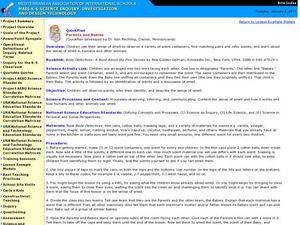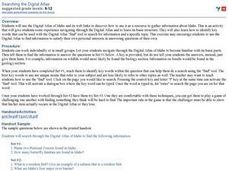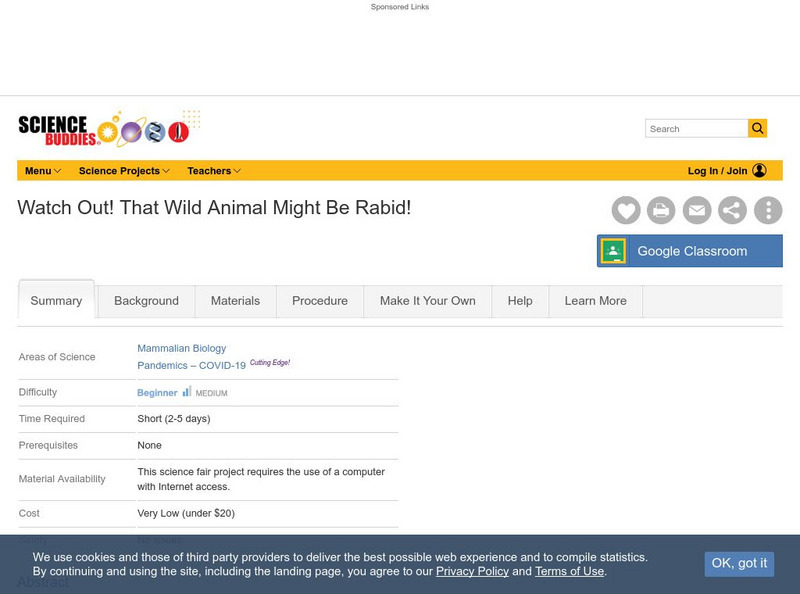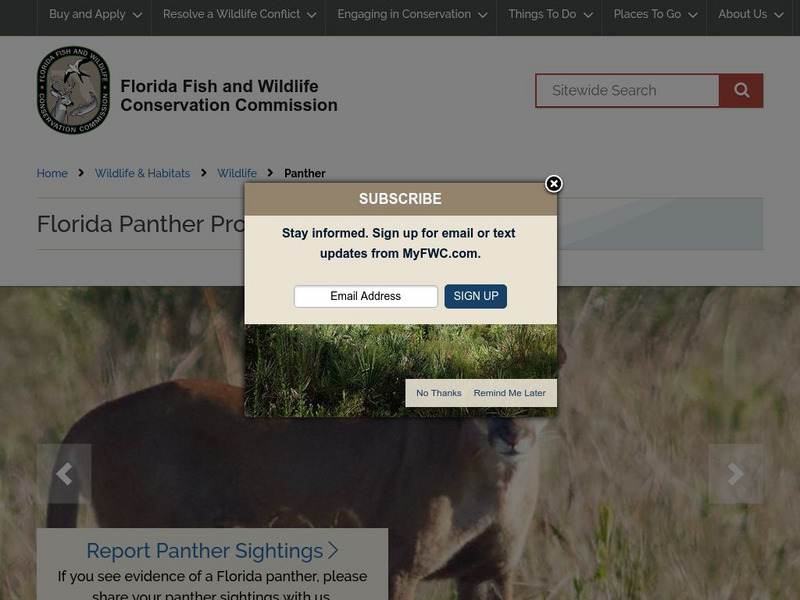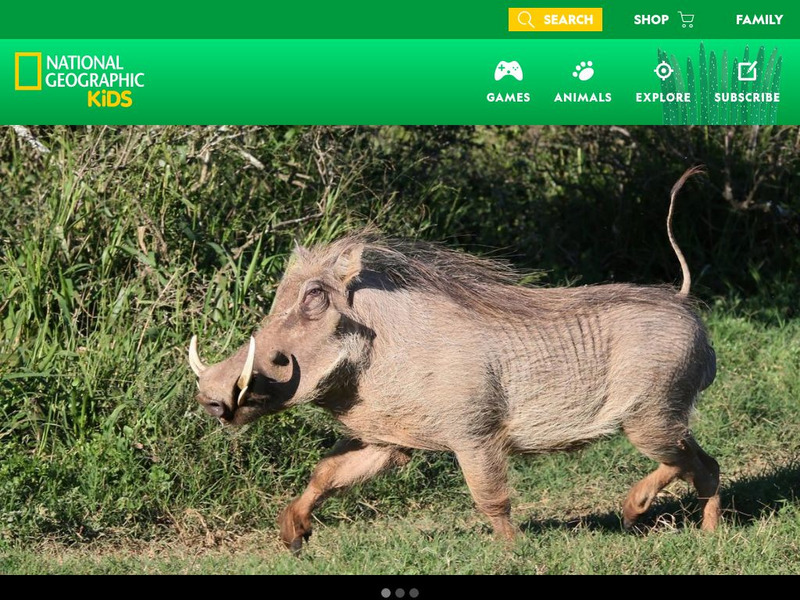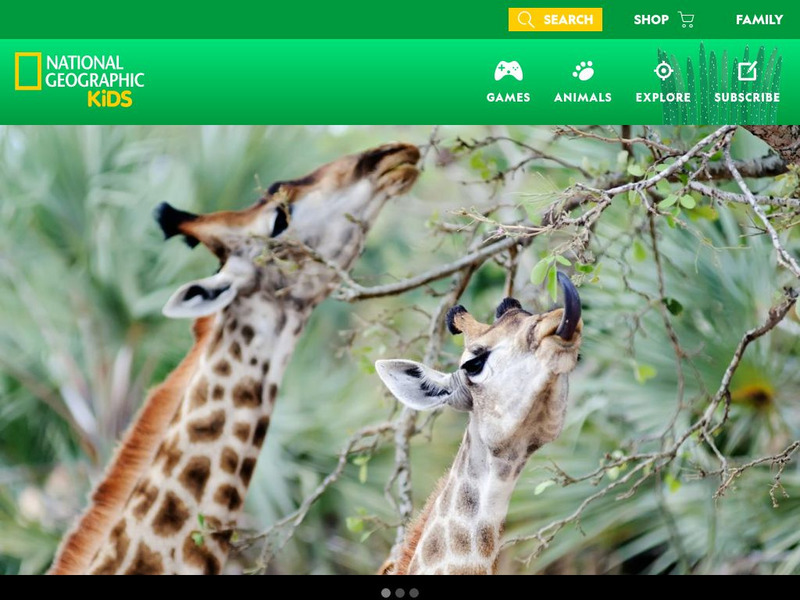Curated OER
Parents and Babies
Students examine different scents. In this science lesson, students are divided into being parents or babies and are each given a scent. The "parents" have to identify or infer the scent of their "baby" showing that every mammal has a...
Curated OER
Animal Classification
In this animals worksheet, students match the words in the first column to the statement that best matches. The terms are associated with the different groups of animals. Students must match 17 terms.
Curated OER
Animal Classification
In this animal classification worksheet, students will complete a graphic organizer by writing in the different animal groups: birds, mammals, reptiles, birds, and amphibians.
Curated OER
Lion
In this lion activity, students explore the group, order and characteristics of a lion. They discover where the lion lives, its lifespan, and general facts about the "king of the jungle." Students then color a picture of a lion. This is...
Curated OER
African Elephant
In this African elephant worksheet, students discuss facts about the elephant, its lifespan, food it eats, its height and weight. Students then color a picture of the elephant. This one page color sheet contains one picture to color.
Curated OER
Name that Mammal
Students become familiar with various mammals found in Idaho. They work in groups of three to four. Students use the digital atlas to identify mammals. They complete this activity by using the mammal section of the Digital Atlas.
Curated OER
Searching the Digital Atlas
Students become familiar with the tools of a digital atlas. They use a digital atlas of Idaho to located specified information. Students identify national forests, locate butterfly families, find examples of resident fish, and explore...
Curated OER
"Whales are Mammals" Idea Web
Third graders explore the characteristics of whales that defines them as mammals. Using the internet and Inspiration software, 3rd graders create and organize "idea bubbles" to organize facts about whales. They locate details to...
Science Buddies
Science Buddies: Watch Out! That Wild Animal Might Be Rabid!
The word rabid often makes people think of an animal that is extremely violent, crazy, and maybe even foaming at the mouth. But not all animals infected with the rabies disease fit that description. Nevertheless, it is important to avoid...
Encyclopedia of Earth
Encyclopedia of Earth: Evolutionary Biology: Mammal
Article explaining the basic characteristics of mammals, their diet, reproduction, behavior, conservation concerns, taxonomy, and their evolution. (Published: September 23, 2010)
Lincoln Park Zoo
Lincoln Park Zoo: Amur or Siberian Tiger
This site provides detailed information on the Siberian Tiger. Information includes what they look like, where they live, what they eat, and how many cubs they have. Additional information about special adaptations they have.
Georgia Department of Education
Ga Virtual Learning: Earth and Life History
In this amazingly comprehensive tutorial you will learn about the geological and environmental changes that occurred during the geologic time scale.
Natural History Museum
Natural History Museum: Mammals
This is the opening page for an online exhibit on mammals. The topics covered in this exhibit include whales, dolphins, bats, humans, chimps, and more.
Smithsonian Institution
Smithsonian National Zoo: Small Mammals
The Smithsonian National Zoological Park explores the lives of small mammals, both in the wild and in captivity. Choose a webcam to view a variety of small mammals live and up-close, learn about current conservation efforts, access an...
Utah Education Network
Uen: Science Vocabulary Game
Fourth graders will play a review memory game with Utah's Grade 4 Science Standard V vocabulary words during this lesson. Words associated with living things and classifications of living things are included in this lesson.
Other
Florida Panther Net: The Florida Panther
Get all the current news and information on the Florida panther.
BBC
Bbc Science & Nature: The Life of Mammals
Students can watch vivid pictures change before their eyes, from lions to monkeys to dolphins. Authors provide interactive games that aid in learning the behavior of animals. Continue to explore by investigating the habitat, diet, and...
National Geographic Kids
National Geographic Kids: Animals: Orangutans
This multimedia site includes video and audio clips. The maps and fun facts will be very beneficial to students doing research projects.
National Geographic Kids
National Geographic Kids: Animals: Warthogs
"Many scientists believe there are two species of warthogs." Learn all about warthogs in this multi-media site. Video and audio clips as well as other web links make this a great site for student research projects.
National Geographic Kids
National Geographic Kids: Animals: Giraffes
This multi-media National Geographic site includes video and audio clips and fun facts all about giraffes. Students can even send a postcard to a friend.
National Geographic Kids
National Geographic Kids: Animals: Coyotes
Learn all about coyotes on this great multi-media site. Video and audio clips, fun facts and great pictures make this a good National Geographic site for research projects.
National Geographic Kids
National Geographic Kids: Animals: Orcas
Orcas, more commonly known as killer whales, are featured on this multimedia site. These video clips, audio clips, photographs and facts will be very beneficial to students doing research projects.
National Geographic Kids
National Geographic Kids: Animals: River Otter
This multimedia article reveals the natural history of otters. The facts, maps, and video and audio clips are perfect resources for research.
National Geographic Kids
National Geographic Kids: Animals: Koala
"Koalas are marsupials, related to kangaroos." Fun facts, video and audio clips make this a great National Geographic site for student research projects.


